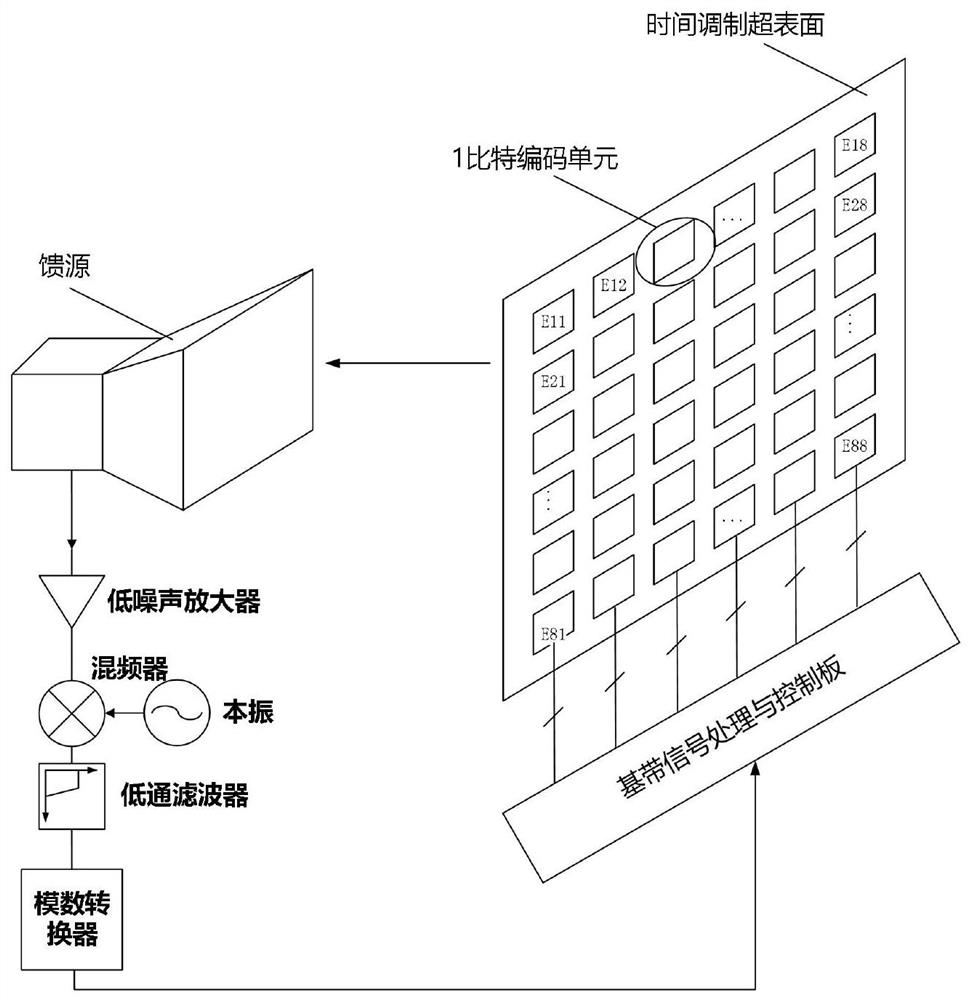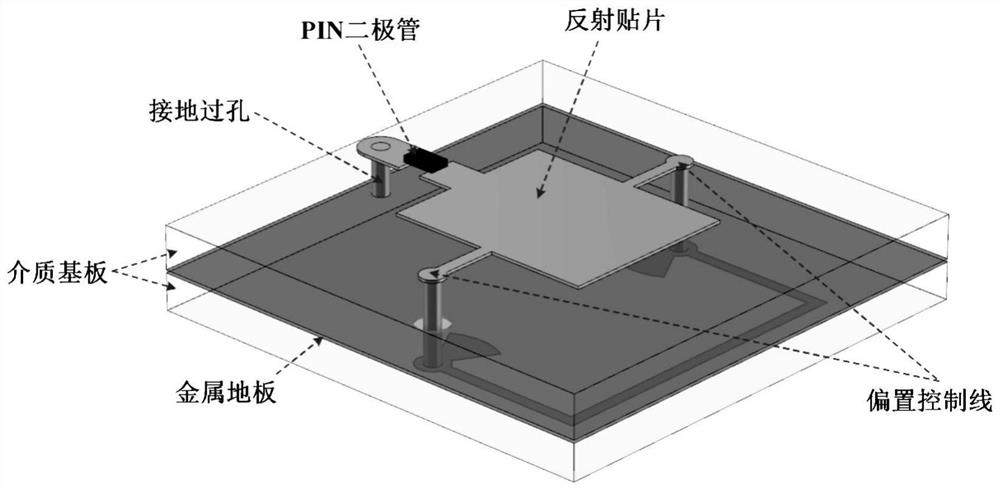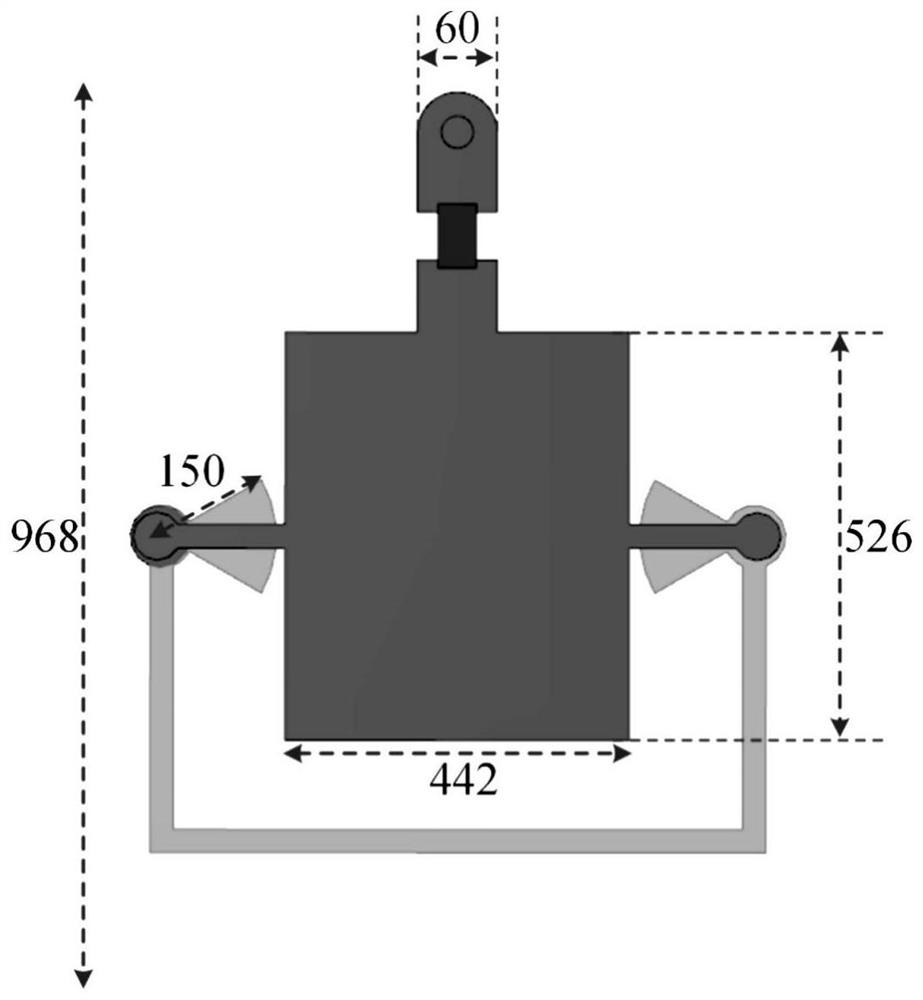Multi-beam satellite-borne AIS signal receiving system and method based on time modulation metasurface
A technology of time modulation and signal reception, applied in multi-frequency code systems, signal channels, etc., can solve the problems of increasing spaceborne load resource overhead, performance degradation, and the probability of time slot conflicts affecting satellite ground coverage capabilities
- Summary
- Abstract
- Description
- Claims
- Application Information
AI Technical Summary
Problems solved by technology
Method used
Image
Examples
Embodiment 1
[0060] According to the design method of the multi-beam space-borne AIS signal receiving system based on the time modulation metasurface provided by the present invention, the system includes a time modulation digital coding metasurface antenna system, a radio frequency subsystem, and a baseband signal processing subsystem.
[0061] Please refer to figure 1 , the time-modulated metasurface array is composed of 64 one-bit reflective digital metasurface units. The digital encoding unit is characterized by integrating a PIN diode in its structure. By applying different bias voltages to the PIN diode, the supersurface The surface units present two different phase responses of 0 degrees and 180 degrees, corresponding to the digital "0" and the digital "1" respectively. By optimizing the control of the unit code distribution and the periodic timing of the code on the digital metasurface, the beam pattern can be realized. Integration, beam scanning, and simultaneous multi-beam covera...
Embodiment 2
[0079] One-bit digitally coded metasurface unit
[0080] Please also see Figure 2 to Figure 5 .
[0081] figure 2 and image 3 The structural diagram and dimensioning diagram of a one-bit metamaterial unit are given respectively. It can be seen that a one-bit digital coded metasurface unit integrated with a PIN diode is used. The unit structure includes: reflective metal patch, PIN diode, metal floor , Ground vias, symmetrical center bias control lines, terminal open fan-shaped stubs, etc. Among them, in order to effectively reduce the interference of the bias control line to high-frequency signals, the center bias control line adopts a symmetrical design and is located in the central weak field strength area of the reflective metal patch; at the same time, the front end of the center bias control line An open-terminated fan stub is further integrated to further improve the isolation between the RF signal and the bias DC. Two different bias voltages are applied to the...
Embodiment 3
[0084] Time-modulated metasurfaces enable simultaneous multiple beams
[0085] Please also see Figure 6 to Figure 10 .
[0086] Assume that the element spacing of the 8x8 time-modulated metasurface is half a wavelength (93.75cm), and the distance between the feed source and the center point of the metasurface is 2.5 wavelengths. The goal of the design is to form 4 beams at the same time, pointing at (15°, 0°), (15°, 180°), (45°, 0°) and (45°, 180°) respectively. That is, the beam pointing of the positive first harmonic component is (15°, 0°), the beam pointing of the negative first harmonic component is (15°, 180°), the beam pointing of the positive third harmonic component is (45°, 0°), and the negative Beam pointing of the third harmonic component (45°, 180°).
[0087] Since each unit on the time-modulated metasurface has a different distance to the feed source, it can be approximately considered that the amplitude weight on the (m, n)th unit due to the distance is whe...
PUM
 Login to View More
Login to View More Abstract
Description
Claims
Application Information
 Login to View More
Login to View More - R&D
- Intellectual Property
- Life Sciences
- Materials
- Tech Scout
- Unparalleled Data Quality
- Higher Quality Content
- 60% Fewer Hallucinations
Browse by: Latest US Patents, China's latest patents, Technical Efficacy Thesaurus, Application Domain, Technology Topic, Popular Technical Reports.
© 2025 PatSnap. All rights reserved.Legal|Privacy policy|Modern Slavery Act Transparency Statement|Sitemap|About US| Contact US: help@patsnap.com



